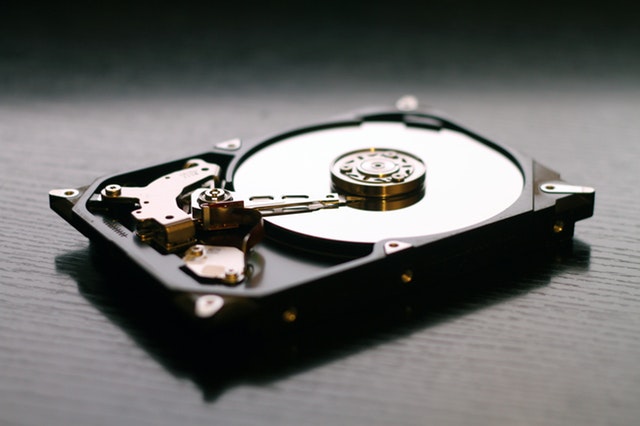How Do Hard Drives Work?

Howdy! Friends have you ever thought that where does the file gets stored when you click on ‘save as’ option on your computer. Well, on most computers when you save your work it’s starred on what’s called a hard disk drive, sometimes written as ‘HDD’.
In some ways the hard disk drive is a lot like your school bag, you can keep your work in there until you need to get it out. You can make new files on your computer or edit files already saved on the HDD, in the same way that you can write a new paragraph in your English book. Once you’ve made your new file or change your existing file you can save it back to the HDD, just like putting your book back into your school bag. You can also delete things from a hard disk drive, just like you can throw something away out of your bag. Files that you create it are not the only thing stored on a hard disk drive, the programs that you have in your computer such as Microsoft Word or Internet Explorer or a computer game that you’ve got installed are also saved on your hard disk drive. The bigger the hard disk drive the more files and programs you can start.
Hard disk is an object that can likely hold more information than your local library.
Contents
Let us see How do hard drives works?
Inside a Hard Disc Drive
So how does hard disk store so much information in such a small space?
At the heart of every hard drive is a stack of high-speed spinning discs with a recording head flying over each surface. Each disc is coated with a film of microscopic magnetized metal grains, and your data doesn’t live there in a form you can recognize. Instead, it is recorded as a magnetic pattern formed by groups of those tiny grains. In each group, also known as a bit, all of the grains have their magnetization’s aligned in one of two possible states, which corresponds to zeroes and ones. Data is written onto the disc by converting strings of bits into electrical current fed through an electromagnet. This magnet generates a field strong enough to change the direction of the metal grain’s magnetization. Once this information is written onto the disc, the drive uses a magnetic reader to turn it back into a useful form; much like a phonograph needle translates a record’s grooves into music.
But how can you get so much information out of just zeroes and ones?
Well, by putting lots of them together. For example, a letter is represented in one byte, or eight bits, and your average photo takes up several megabytes, each of which is 8 million bits. Because each bit must be written onto a physical area of the disc, we’re always seeking to increase the disc’s areal density, or how many bits can be squeezed into one square inch. The areal density of a modern hard drive is about 600 gigabits per square inch, 300 million times greater than that of IBM’s first hard drive from 1957. This amazing advance in storage capacity wasn’t just a matter of making everything smaller, but involved multiple innovations. A technique called the thin film lithography process allowed engineers to shrink the reader and writer. And despite its size, the reader became more sensitive by taking advantage of new discoveries in magnetic and quantum properties of matter. Bits could also be packed closer together thanks to mathematical algorithms that filter out noise from magnetic interference, and find the most likely bit sequences from each chunk of read-back signal. And thermal expansion control of the head, enabled by placing a heater under the magnetic writer, allowed it to fly less than five nanometers above the disc’s surface, about the width of two strands of DNA. For the past several decades, the exponential growth in computer storage capacity and processing power has followed a pattern known as Moore’s Law, which, in 1975, predicted that information density would double every two years. But at around 100 gigabits per square inch, shrinking the magnetic grains further or cramming them closer together posed a new risk called the superparamagnetic effect. When a magnetic grain volume is too small, its magnetization is easily disturbed by heat energy and can cause bits to switch unintentionally, leading to data loss.
How scientists resolved the above limitation?
Scientists resolved this limitation in a remarkably simple way: by changing the direction of recording from longitudinal to perpendicular, allowing areal density to approach one terabit per square inch. Recently, the potential limit has been increased yet again through heat assisted magnetic recording. This uses an even more thermally stable recording medium, whose magnetic resistance is momentarily reduced by heating up a particular spot with a laser and allowing data to be written. And while those drives are currently in the prototype stage, scientists already have the next potential trick up their sleeves: bit-patterned media, where bit locations are arranged in separate, nano-sized structures, potentially allowing for areal densities of twenty terabits per square inch or more.
So it’s thanks to the combine efforts of generations of engineers, material scientists, and quantum physicists that this tool of incredible power and precision can spin in the palm of your hand.






Responses